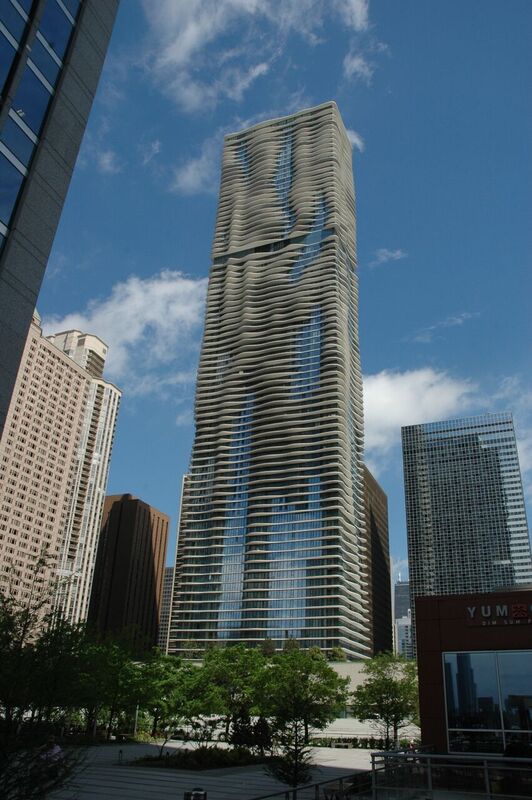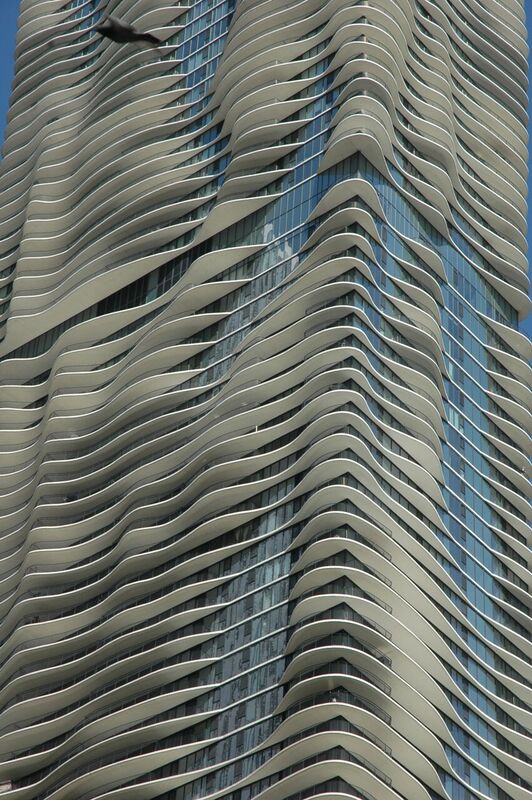Few things in the world have as much immediate ability to shift me into a different mood, into a different and more positive outlook, than birds—seeing them, hearing them, watching their often frenetic but joyful movements and machinations. Birds, and animals more generally, don’t receive the attention they deserve among urban designers and planners. They are so profoundly a part of the quality of life, and so important to the positive mental health of urban residents, that they ought to be given more attention in planning. And of course the many design decisions we make about our buildings and urban neighborhoods have major implications for birds. Bird-building collisions account for hundreds of millions of bird deaths a year.
That could change if we generally followed bird-friendly design guidelines. We review some of these ideas in the Handbook of Biophilic City Planning and Design. One remarkable building we profiled is the Studio Gang–designed Aqua Tower in Chicago. With its visually distinct, undulating facade, birds are able to see this building and avoid colliding with it. Cities can of course take many other steps, and many, such as the City of San Francisco, also profiled in the Handbook, have adopted impressive “Standards for Bird-Safe Buildings. These standards actually mandate bird-friendly window and facade treatments. There are lights-out programs in San Francisco, as well as in Chicago, Toronto and other cities. Nonprofits like FLAP (Fatal Light Awareness Program) in Toronto are working to raise awareness about bird-building fatalities and what we can do about them.


In another city profiled in our book, Wellington, New Zealand, there is a remarkable wild preserve called Zealandia (surrounded by a predator-proof fence), that seeks to allow native species to rebound. With the tagline “bringing birdsong back to Wellington,” Zealandia has already been successful as more residents and neighborhoods are experiencing formerly-decimated native birds like the Kaka (a species of parrot), and this species has really rebounded. For many of us who are advocates of urbanism there is a growing appreciation of the power and life-enhancing nature of birdsong! And perhaps a metric for judging the long term success of city planning and design (what percentage of city’s neighborhoods can one hear native birdsong?).
One of my favorite species of bird, both to hear and to watch, is the Chimney Swift. Their speed and aerobatics are wonderful and gravity-defying. Yet their numbers are in decline, in part because of the found in homes and businesses.
Communities around the country have sought to remedy this by erecting Swift Towers. From Chicago to Raleigh, North Carolina, these towers are popping up to create new nesting spaces and roosting spots. But we need more efforts to ensure that existing chimneys remain as habitat. As the time for southern migration approaches, the swifts begin to congregate in large flocks, and each evening settle to roost in dramatic fashion—a wondrous swirling vortex of birds that somehow makes its way through the opening of a chimney. It can be a moment of collective wonder and solace, as it is in places like Arlington County, Virginia, where residents come together to watch this spectacle, or in Portland, Oregon, where groups enjoy watching Vaux Swifts engage in similar aerobatics. This is a group (bird) therapy that adds immensely to our urban lives.


